Arts & Entertainment Community
Gig Harbor’s Wurlitzer Manor hits all the right notes
From the street, there’s no clue of what lies behind the wall of evergreens. Even from the water, the only unusual thing visible is the multi-level deck that spans the building.
Arts & Entertainment Sponsor
Arts & Entertainment stories are made possible in part by the Gig Harbor Film Festival, a proud sponsor of Gig Harbor Now.
But pass through the gate, enter the home’s spacious foyer and step down into the living room and you suddenly understand that — as the artwork on the gate hints — this is a house built for music.
And a house that music built.
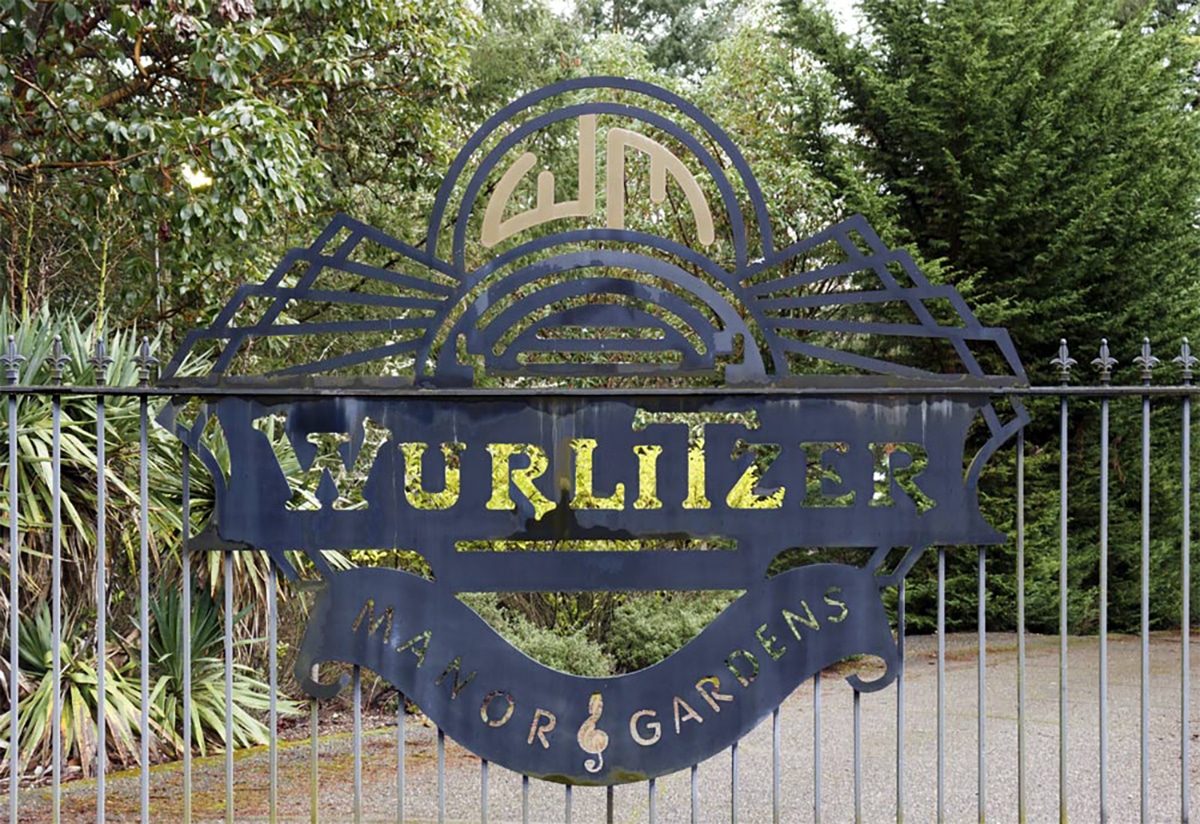
The gate outside Wurlitzer Manor in Gig Harbor provides little indication of what lies behind.
‘Room with organ’
Wurlitzer Manor is the home of Raymond Levine, Barbara Hammerman and Hammerman’s daughter, Amanda Gresham. The couple bought the home in 2002 after responding to a real estate ad that included the intriguing line, “Room with organ.”
For several years, Hammerman and Levine had wanted to move from California to the Pacific Northwest. Whenever business brought Hammerman north, they spent time exploring the Puget Sound area and the Olympic Peninsula.
They were looking for a home with plenty of room to continue their California tradition of hosting music gatherings and house concerts with traveling blues and jazz musicians. And besides, music has been an important part of Hammerman’s life ever since she was a kid growing up in Louisiana — a hotbed of music if ever there was one.
In Wurlitzer Manor, they not only found a place for making music, they also found a house with a story.
Built around a theater organ
Wurlitzer Manor was built in the 1980s for Dick Wilcox, a computer software engineer and theater organ aficionado. Wilcox a place for himself and the huge Wurlitzer pipe organ he owned.
The Rudolph Wurlitzer Organ Company built Wilcox’s organ and hundreds of others like it in the early 1900s. They provided the soundtrack to silent movies at theaters all over the U.S., Canada, England and Australia.
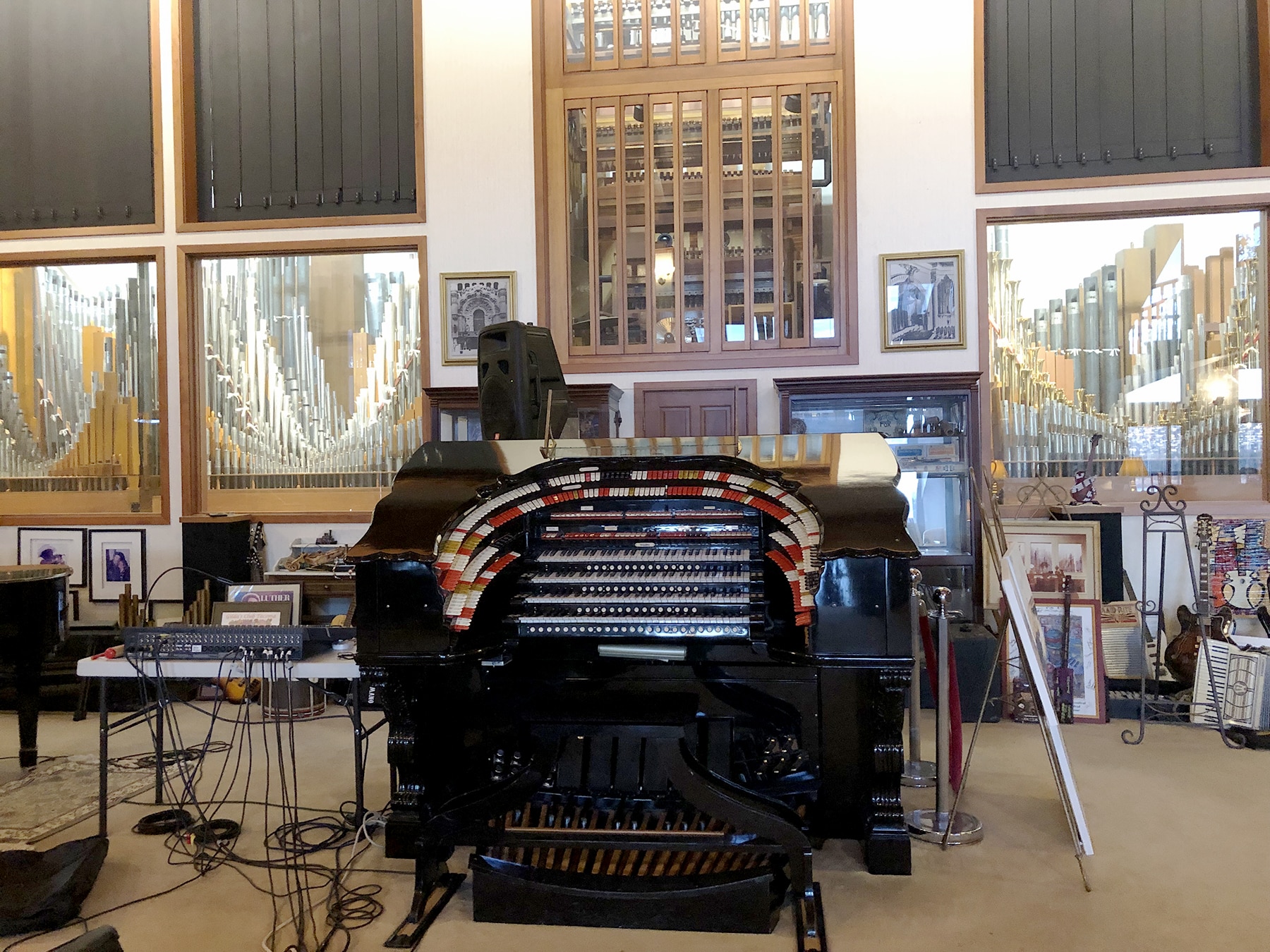
Pipes are visible in the glass-enclosed space behind the organ.
According to the Manor’s archives, Wilcox’s organ is Opus #104. Its first musical assignment was in Brooklyn’s Fox Theatre in New York in 1928. Wearing a coat of ivory paint with gold trim, it entertained thousands of movie goers until “talkies” replaced silent movies in the ’30s.
Then, as happened with most theater organs, the theater’s owners retired Opus #104. They dismantled it and stored it in the theater’s basement until, in the 1970s, it found new life during the pizza-and-pipes era. It wound up in the Cardinal Music Palace in Fort Wayne, Indiana, wearing a new coat of royal blue and gold paint.
That’s where Wilcox purchased it.
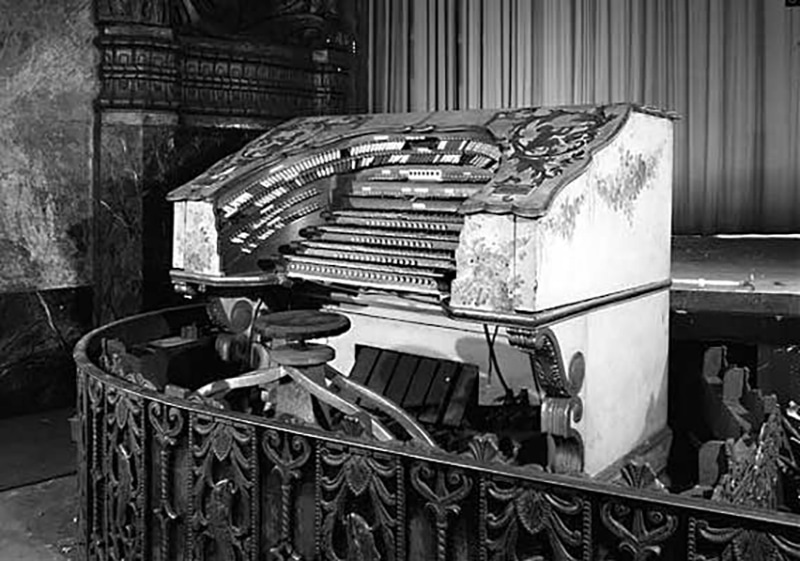
Cutline: Opus #104 in it’s first home in a Brooklyn, New York movie theater, circa 1928.
The computer relay system
Wilcox designed a computer relay system that could play all of a pipe organ’s instruments — the trumpets, percussion, piccolos, xylophone, bells and whistles … the entire orchestra – through a special control panel.
Now that he had a theater organ of his very own, all he needed was a place to install the big four manual (keyboard) console, its 48 ranks of wood and metal pipes, its musical components – those trumpets, drums and so forth – and his new-fangled computer system.
He found 18 acres of high-bank waterfront overlooking the Tacoma Narrows and hired Tacoma architect Jim Merritt to design a proper home for himself and Opus #104.
Wilcox originally planned two separate buildings — a house for people and a music hall-cum-entertainment-space for the organ.
But after spending time on the property Merritt proposed combining everything in one building.
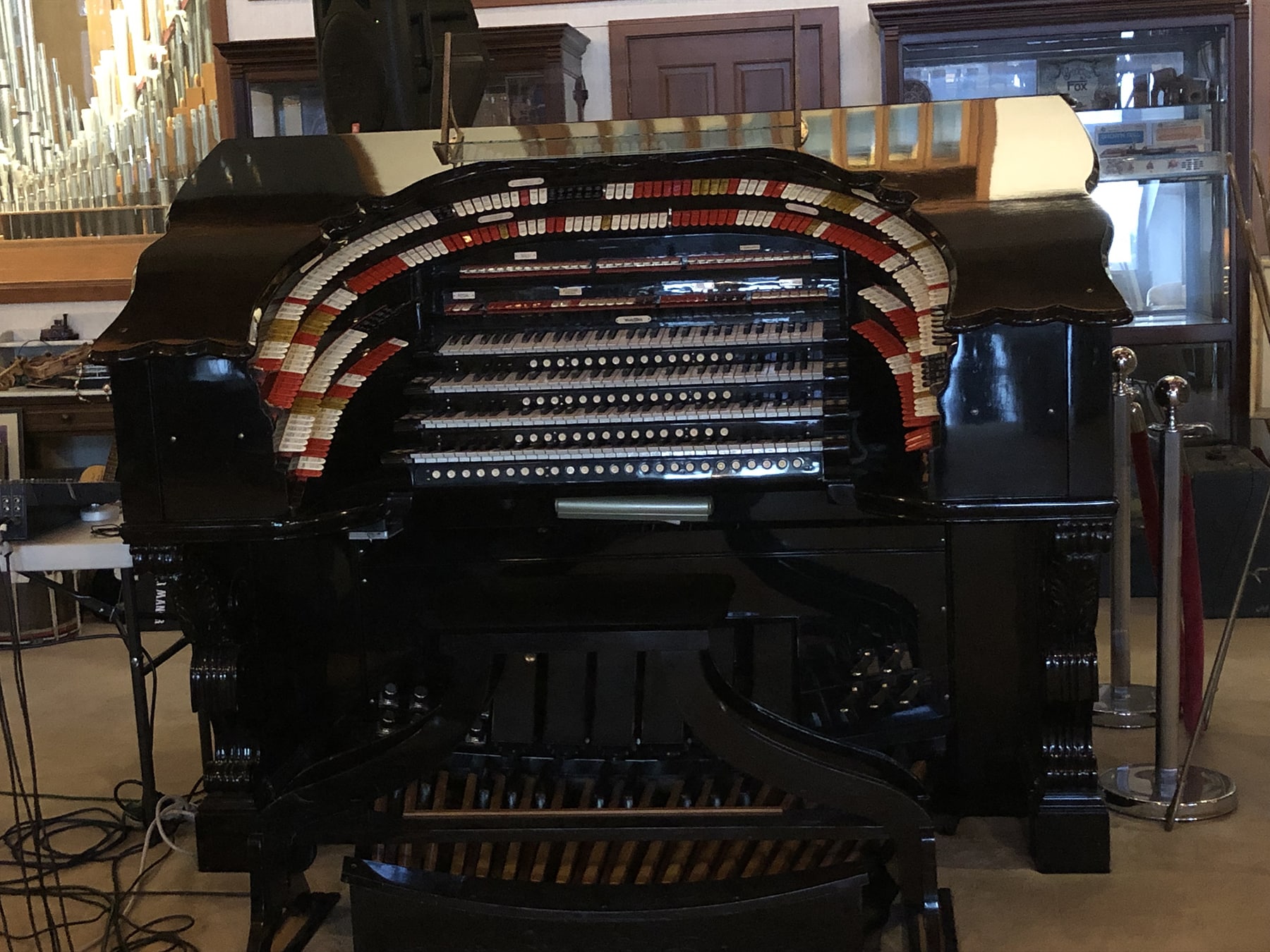
The historic Wurlitzer organ — Opus No. 104 — has four keyboards and dozens of stops.
Wilcox also hired the husband-and-wife-team of Ed Zollman and Patti Simon. Zollman was one of the best in the country at repairing and maintaining pipe organs. Wilcox knew Zollman could rebuild the organ and make it playable. And he was certain Zollman had the technical savvy to hook it up to his computer system.
“Ed and Patti really are the creators of the organ,” Barbara Hammerman said. “They worked really closely with Jim Merritt through the whole design and building process.
“They carried every part of the organ from where it was stored at the Narrows Airport, and then they re-built it, piece-by-piece, pipe-by-pipe and hooked everything up to Ed’s relay system.”
Once construction was complete and Opus #104 was in place — now painted ebony and shiny as patent leather — Zollman acoustically “tuned” everything in the hall to handle the organ’s powerful sound.
The music hall
The home itself is about 11,000 square feet, Hammerman said. But it doesn’t feel huge because of the way it’s laid out. There’s a separate family area with four bedrooms and other private spaces.
The public area – that “performance hall” – is about 4,800 square feet and includes a great room that can seat dozens of guests comfortably. There’s also a bar, dining areas and kitchen.
The great room — Hammerman refers to it as “the music room” — has a very high, truss-type ceiling and several levels. Layers, if you will.
There’s a lower seating area a few steps down from the main room, a small side room that aids sound movement and a balcony that wraps two sides of the main room with a sort of floating space. Everything was created specifically to handle the sound of organ and every detail contributes to the acoustics.
Carpet covers most of the floor to absorb sound. The number of people in the room also affects the musical experience.
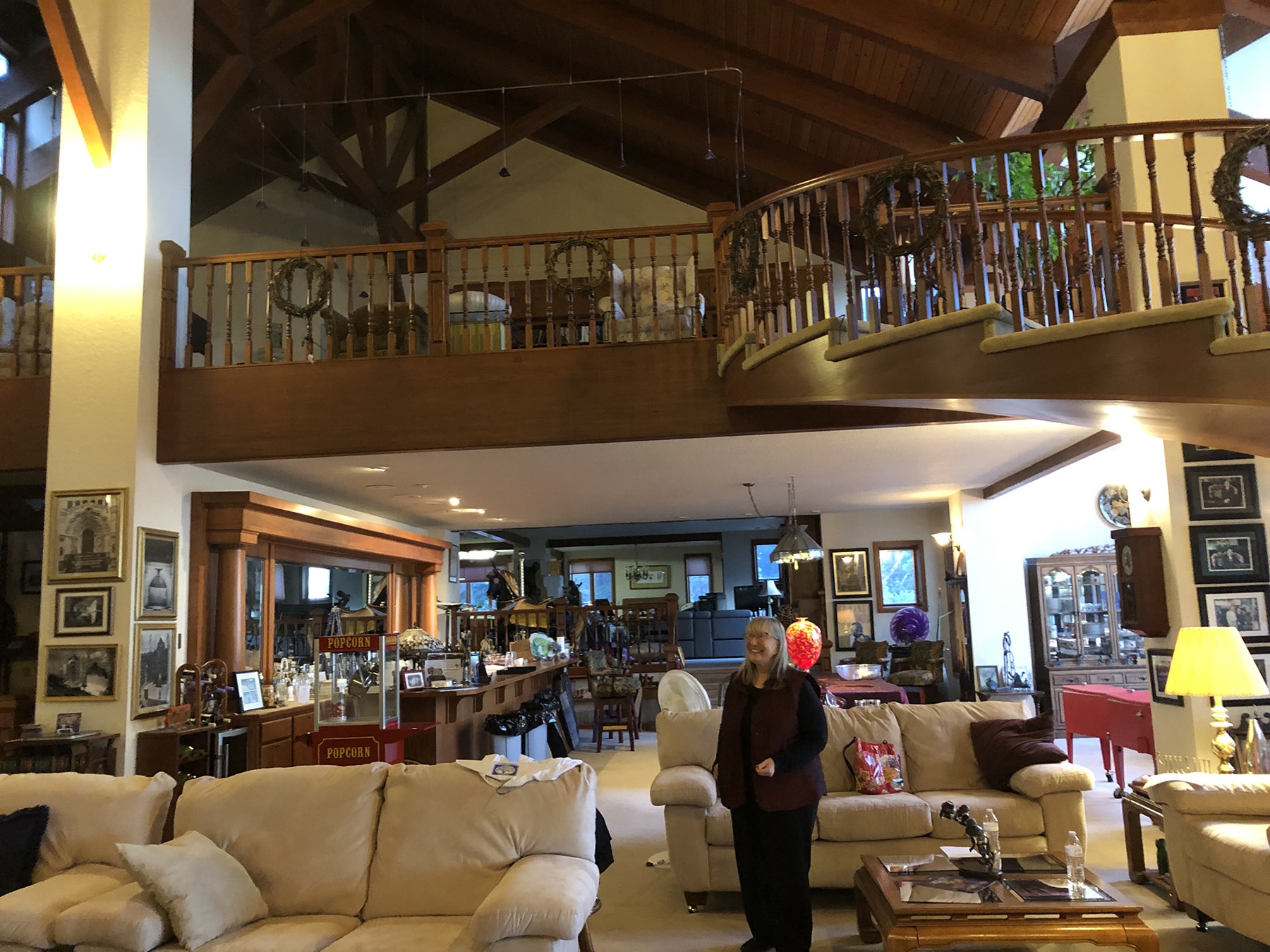
Barbara Hammerman surveys the music room created for the theater organ.
The pipes
Opus #104’s metal pipes — hundreds of them — are in full view in a glassed-in space behind the console. The “orchestra instruments” — the brass, winds, percussion and so forth — are installed in the vaulted ceiling, en chamade (meaning positioned horizontally, projecting out into the room). People sitting in the balcony have an up-close view of the instruments playing.
A couple of pianos in the great room are also linked to the organ through the control panel tucked into a small room next to the pipes’ area.
A low-ceilinged space below the pipes houses other components, like fans and air-intake tubes.
And there are all sorts of other little nooks and crannies designed to handle the reverberation, volume and tone of the organ and to help all the components “breathe.”
Merritt designed everything in the space to make the organ sound as possible, Patti Simon said. “It’s a big room but when you sit and listen to the music, you feel very comfortable and connected. You don’t feel swamped or overcome by all the space. It actually feels quite cozy.”
Zollman’s career has taken him and Simon all over the world, but in 2015 they, too, settled in Gig Harbor. They are frequent guests at the Manor. Simon is an accomplished organist. When Opus #104 was finally in place and properly tuned, she played its inaugural concert.
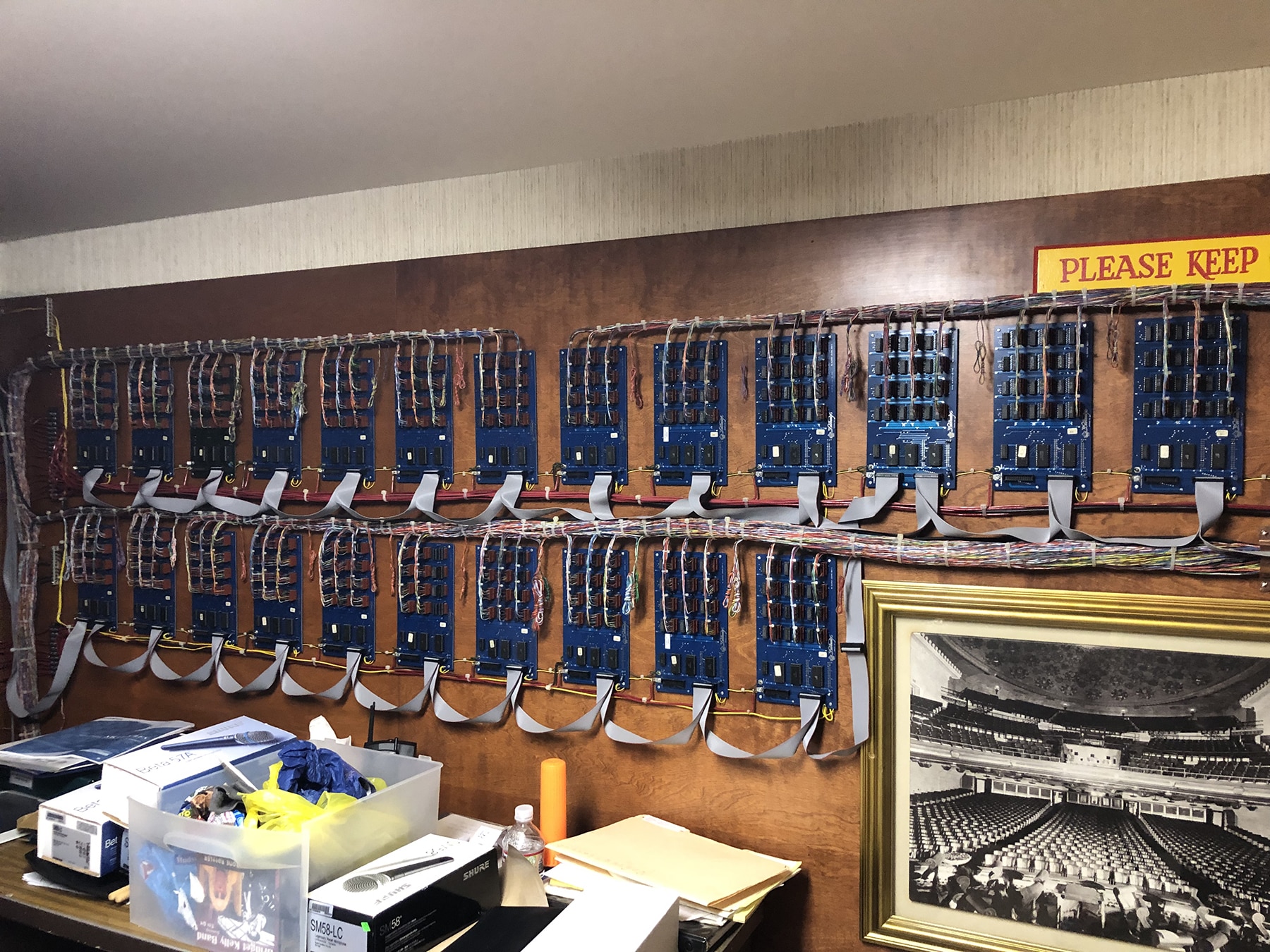
The control room at Wurlitzer Manor.
A gathering place
These days the Manor is a gathering place for a great variety of artistic and musical experiences. It’s a popular house concert stop for touring musicians travelling through the Northwest and for local blues and jazz groups.
It’s home base and the weekly rehearsal space for United by Music North America artists and mentors and a frequent venue for concerts by the Puget Sound Theatre Organ Society, the American Theater Organ Society and a long list of professional organists, many of whose photos adorn the home’s walls alongside concert posters and photos of jazz and blues musicians who’ve befriended Hammerman and Gresham over the years.
But, even though they’ve lived there for more than two decades, Hammerman doesn’t feel like they own the Manor. “Actually, my belief is that anyone who’s so fortunate to inhabit this house isn’t the ‘owner,’” she said. “They’re more like the caretaker.”
She loves the music created in their home. Yet she derives the most joy from watching how people respond to the organ’s music.
“It’s a feeling of wonder and delight,” she said, “because the organ creates such an amazing sound. You feel the music inside of you because you’re actually inside the instrument.
“Every plane, every bit of material in the space was chosen to embellish the instrument. The organ parts are all around you so it’s like you’re one-with-the-music.”
But the thing she loves most is watching kids’ reactions. “They dance and twirl and you can just tell that what they’re feeling is pure joy. One little girl was so enthralled by the music she said that she thought the house was alive.”
And when a group of blind students attended a concert at Manor, they said they could feel the music in the furniture. “They can physically feel the presence of music in the room,” she said.
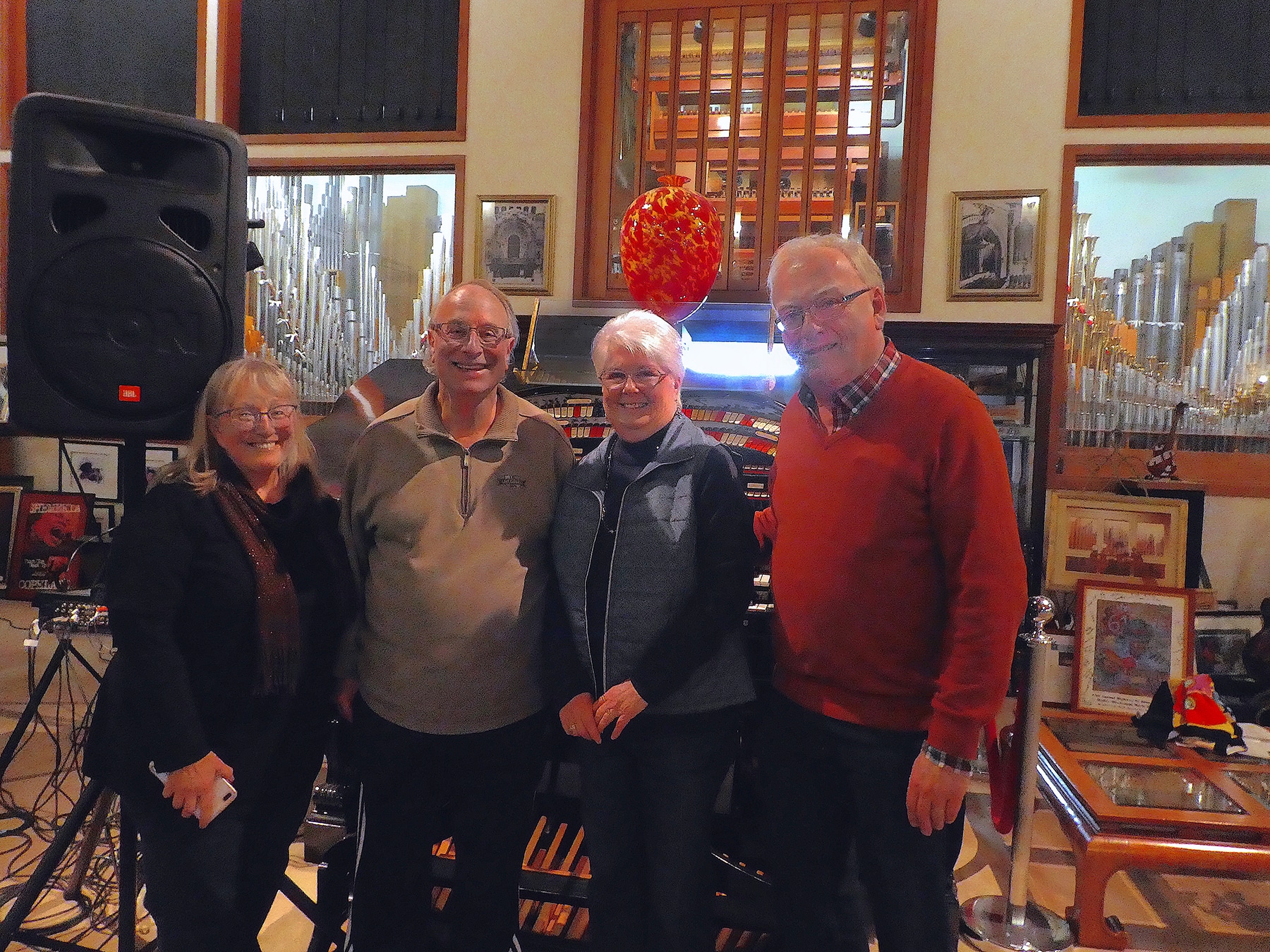
From left, Barbara Hammerman, Raymond Lavine Patti Simon and Ed Zollman.

